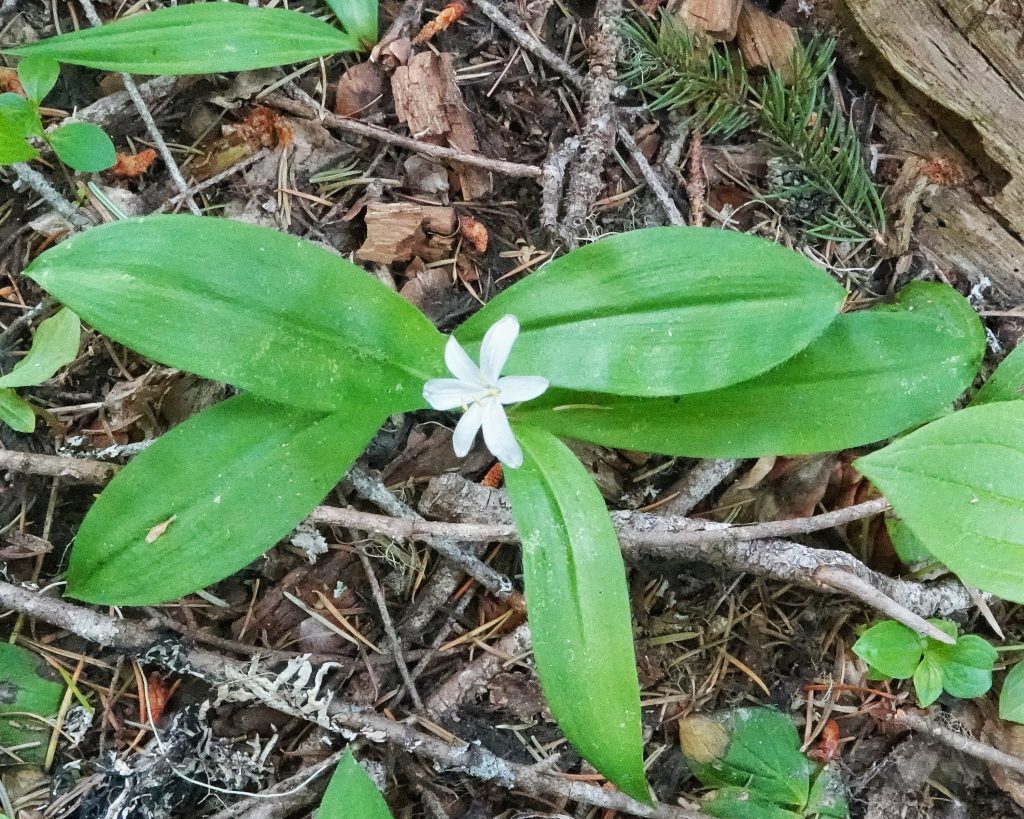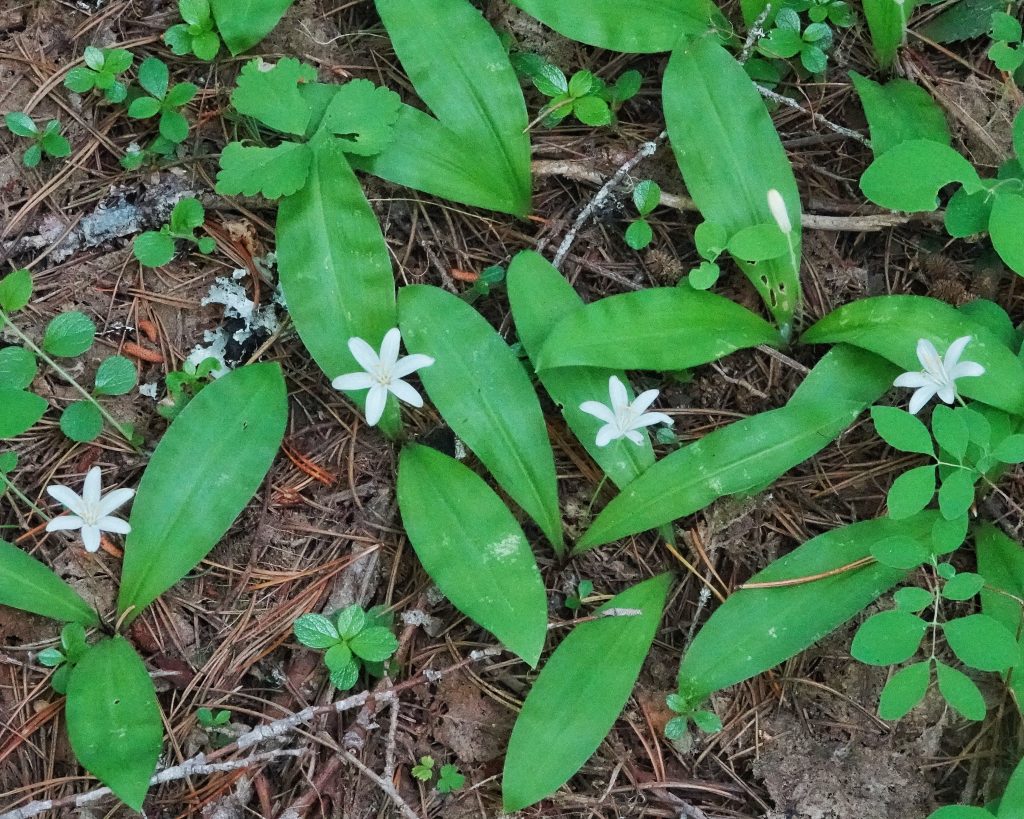
As I mentioned in the blog South Prairie, I had never before managed to find this elegant plant in bloom, and I had to sacrifice a little blood to the mosquitoes to get these photos. But I had found a few of these plants last fall that had the vibrant blue fruit on them, at about the same elevation (3,000’) but 20 miles to the west, and it was a similarly beautiful spot, with forested hills ringing a wet meadow, although that one had a creek running through it rather than a bog.
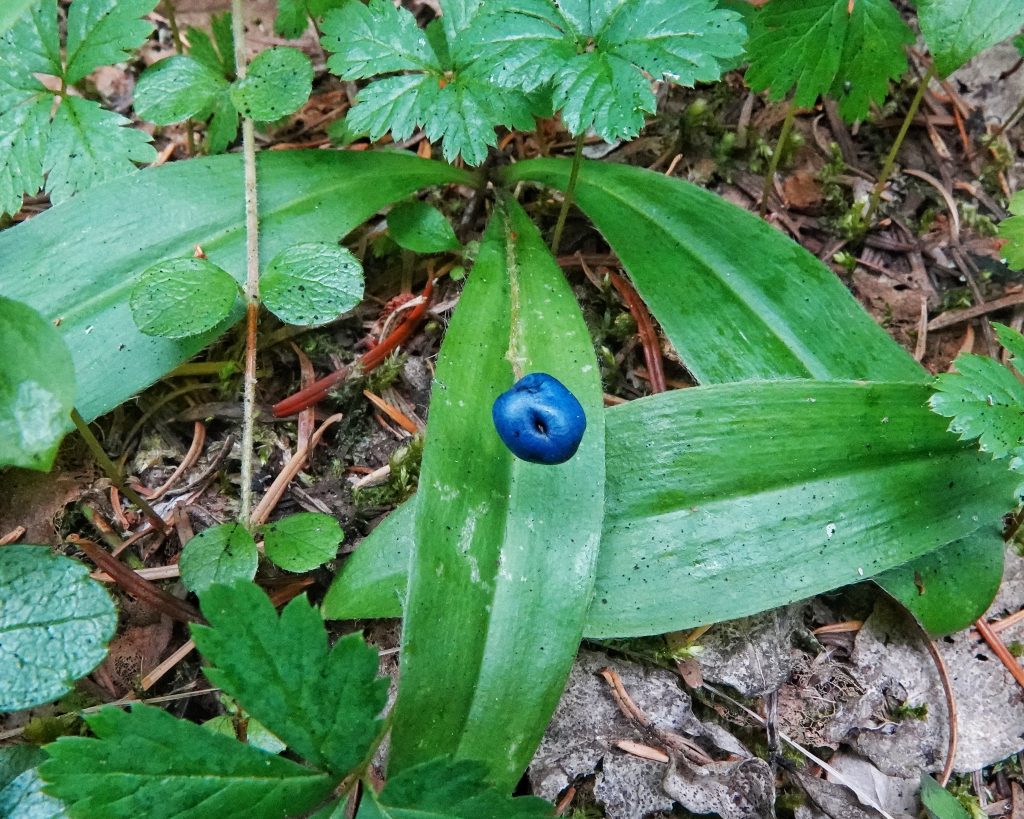
I was a little surprised that this member of the family Liliaceae (which goes by the common names bead lily, queen’s cup, bride’s bonnet, or single flowered clintonia) is apparently used as a food source by certain vertebrates, but even more surprised that I could find no insects that consume it, or any information on what pollinates it. Leslie Haskin says, in “Wild Flowers of the Pacific Coast”, that Clintonia uniflora is “…distinctly a mountain flower. In the subalpine forests of Oregon and Washington, and northward, the plants often carpet the whole earth with their thin, soft, attractive leaves. From May to August, according to the altitude, each plant sends up a single fragile, lily-like flower.” For a comprehensive treatment of this species see Rachelle Meyer’s Forest Service entry on FEIS, Species: Clintonia uniflora
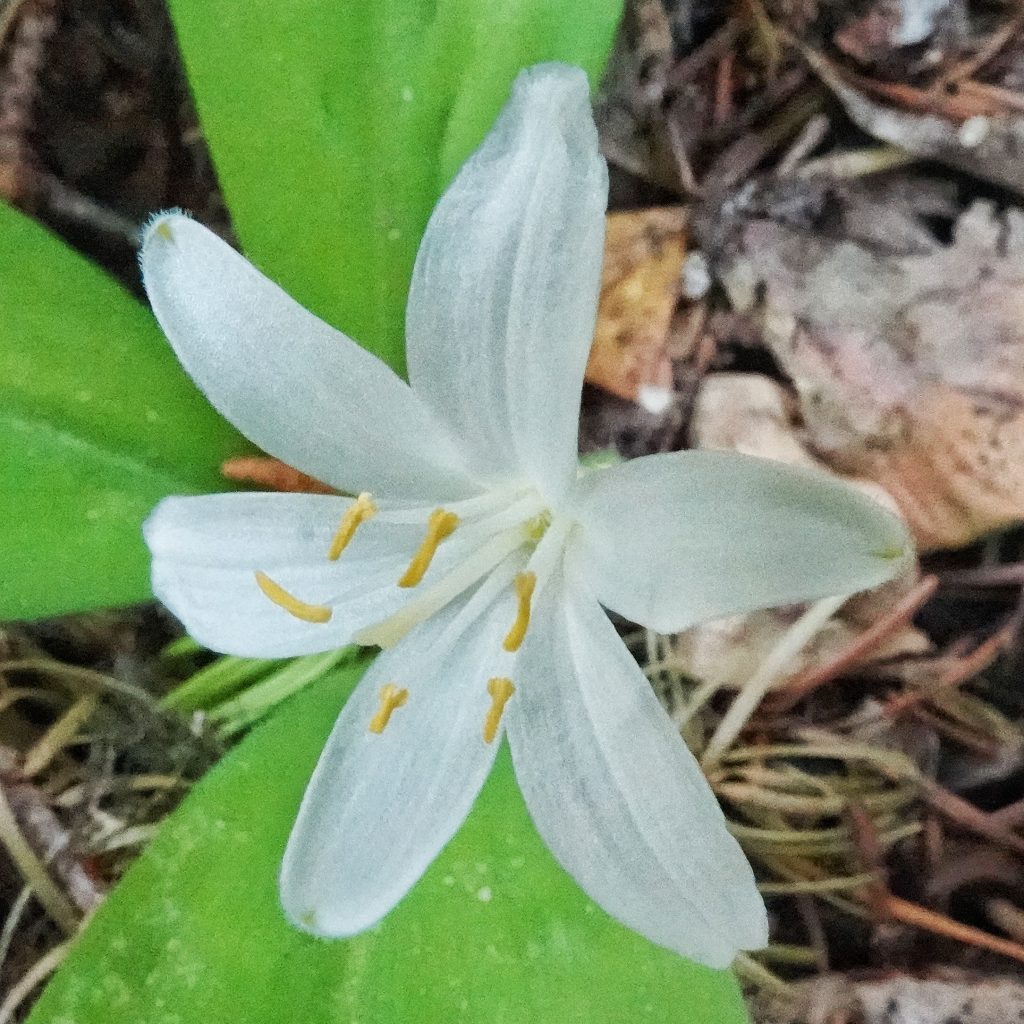
Ethnobotany-“…Poultice of plant applied to the eyes…Poultice of plant applied to wounds and decoction of plant used to wash the body…Mashed, blue, berry like fruits used as a dye or stain. Large quantities of the fruits had to be used in order for the dye or stain to be effective…”. For more information see the 10 entries on BRIT – Native American Ethnobotany Database
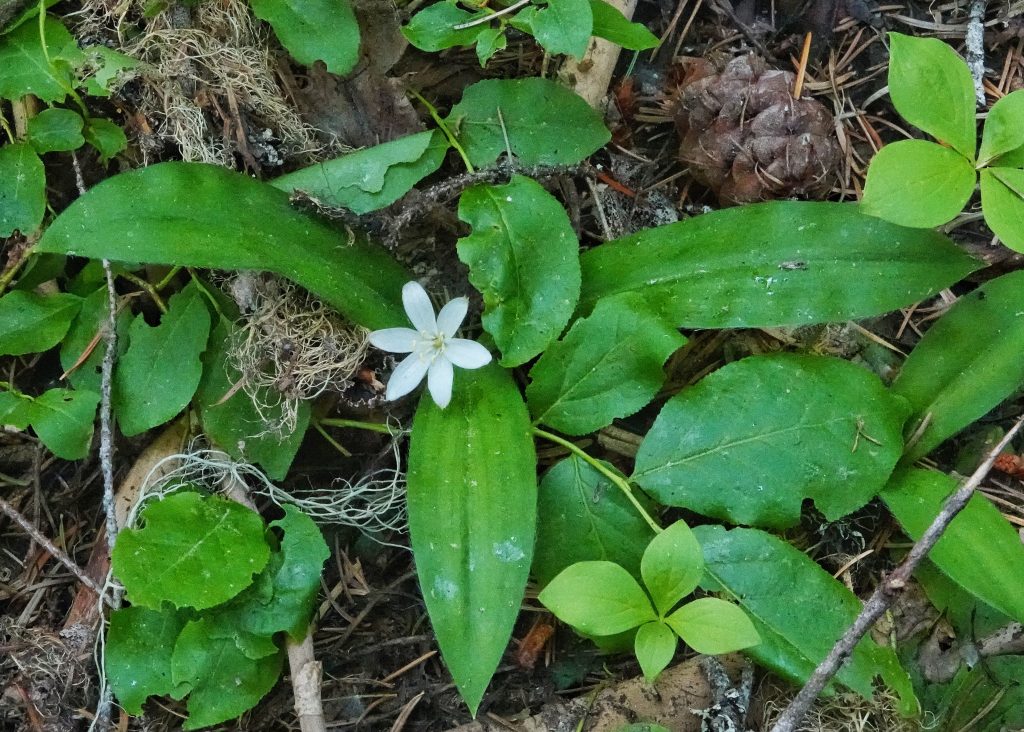
Description– “Rosette of 2–3 leaves, from roots running in deep soils forming ground cover of plants. Leaves 4–6 in. long, 1–2 in. wide, oblong with pointed tip, more or less hairy especially along edges. Stem erect, hairy, topped with 1 white flower 1–2 in. across, slightly cup-shaped at base, petals opening wide and flat to face upward. Seeds in very bright blue berries.” Clintonia uniflora | Queen-cup | Wildflowers of the Pacific Northwest
Similar species– Though the leaves might be confused with other lilies or irises, once it has bloomed it is unlike anything else in our region.
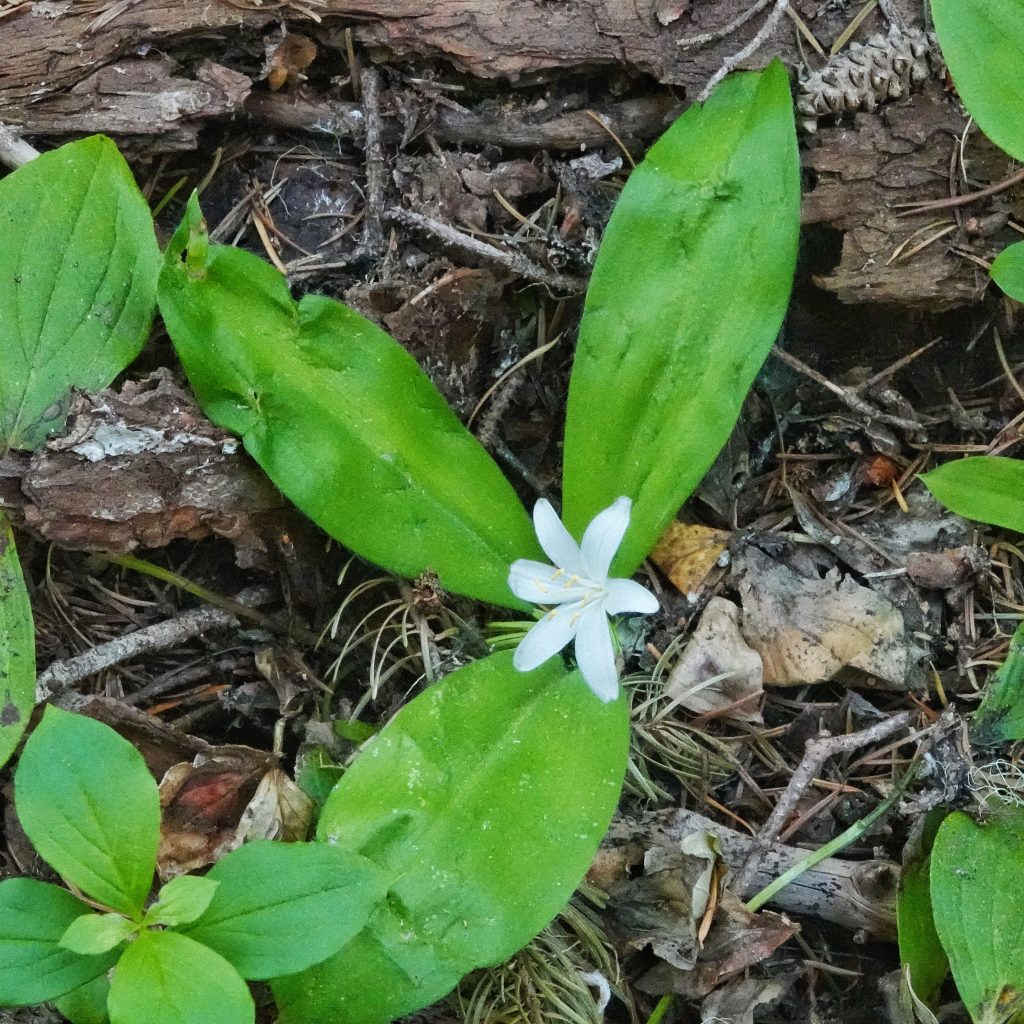
Habitat– “Moist, shaded understory of coniferous forests from coastline to timberline.” OregonFlora Clintonia uniflora
Range– “Clintonia uniflora is native to western North America, from southern Alaska to central California, extending eastward into southwestern Alberta and northwestern Montana.” https://en.wikipedia.org/wiki/Clintonia_uniflora ; found region wide in appropriate habitat in the PNW.
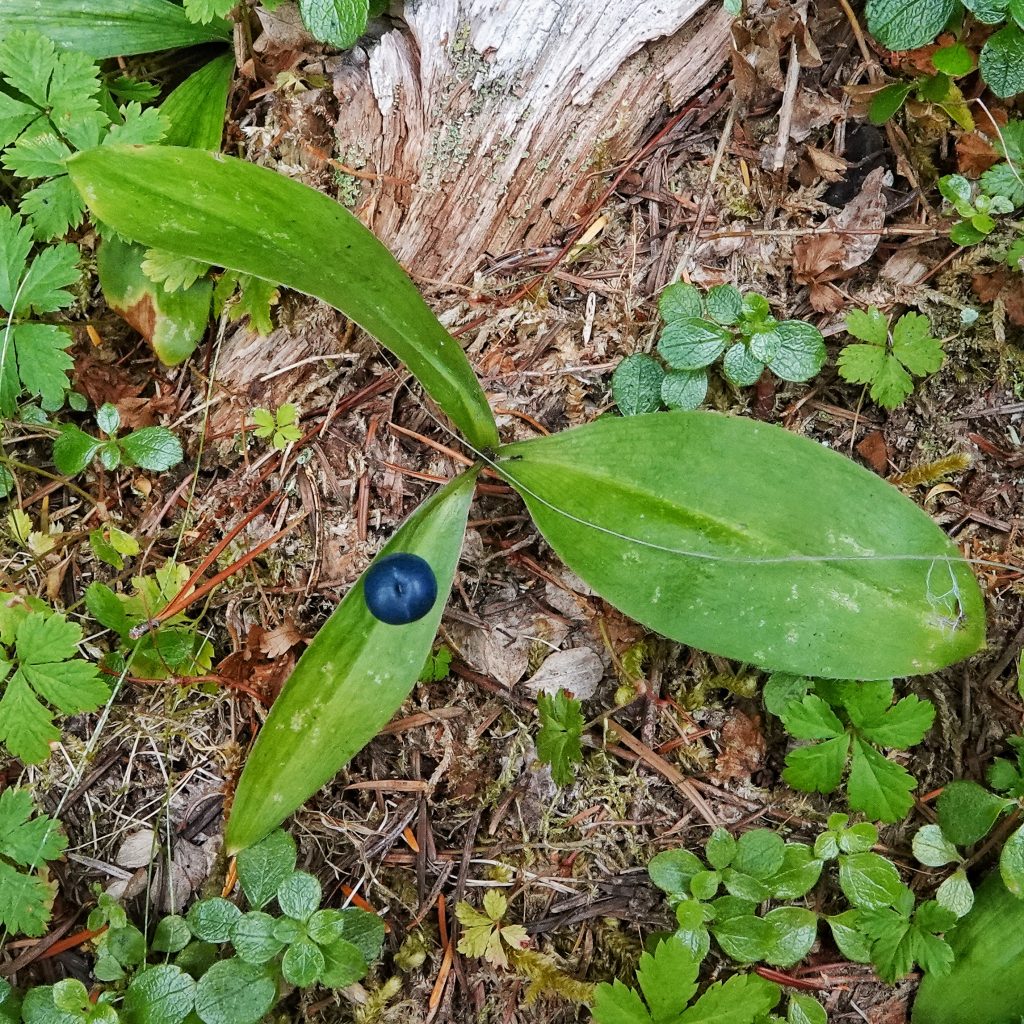
Eaten by– “Bride’s bonnet is food for several wildlife species. Frugivorous birds eat bride’s bonnet berries. Varied thrush was the main species eating fruit in a study in southeastern Washington [90]. Grouse have also been reported to eat bride’s bonnet seeds [72,92]. Hungerford [58] lists bride’s bonnet as an important ruffed grouse food; however, use was not demonstrated. Almack [2] reported a grizzly bear eating bride’s bonnet roots. Piper [91] reported a low incidence of rodent use of bride’s bonnet during an investigation of frugivorous birds. Elk and deer consume bride’s bonnet berries while grazing, although the extent was not reported [91]. Young and Robinette [121] list bride’s bonnet as a low-importance food for elk on the Selway Game Preserve of northern Idaho, although bride’s bonnet was not included as a food item in other studies that have investigated ungulate diets [61,62,84]. Bride’s bonnet is not considered palatable to many species [66,92] and the berry may be poisonous [44,45,92,114]. ” Species: Clintonia uniflora
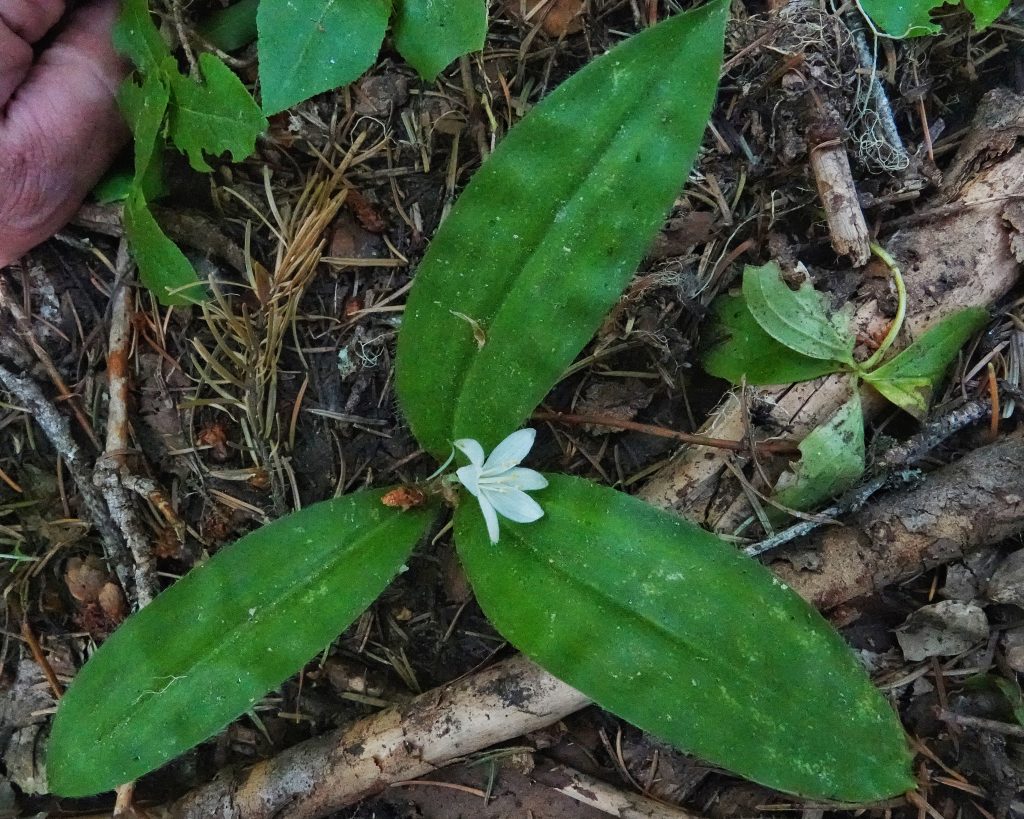
Reproductive timing-Flower blooms May to August, fruits ripen August-September.
Etymology of names– Clintonia honors Dewitt_Clinton (1769-1828), who was a naturalist and politician, and who was a strong challenger to James Madison in the 1812 presidential election, ultimately losing the popular vote by less than 8,000 votes. The specific epithet uniflora is from the Latin for ‘one flower’, referring to the single bloom each plant puts out. The Cowlitz tribe called this plant hwik’hwakul. According to Leslie Haskin, “This beautiful mountain flower has been most unfortunate in the names bestowed upon it, for it was first handicapped by the name of Clinton, a New York politician. Then Mrs. Henshaw, a Canadian writer and evidently a staunch royalist, further blighted it with the flat and futile name of “Queen-cup”.”
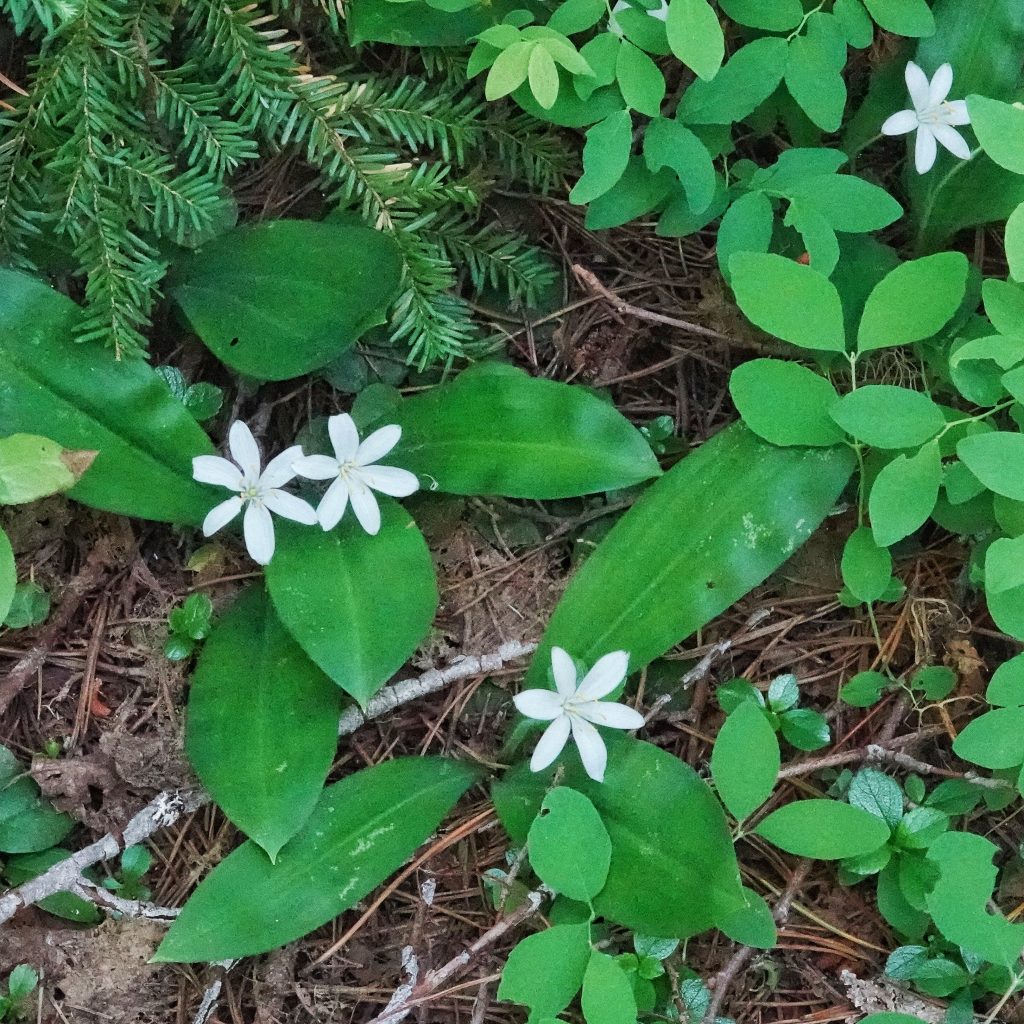
Clintonia uniflora | Queen-cup | Wildflowers of the Pacific Northwest
OregonFlora Clintonia uniflora
https://en.wikipedia.org/wiki/Clintonia_uniflora
https://en.wikipedia.org/wiki/Clintonia
